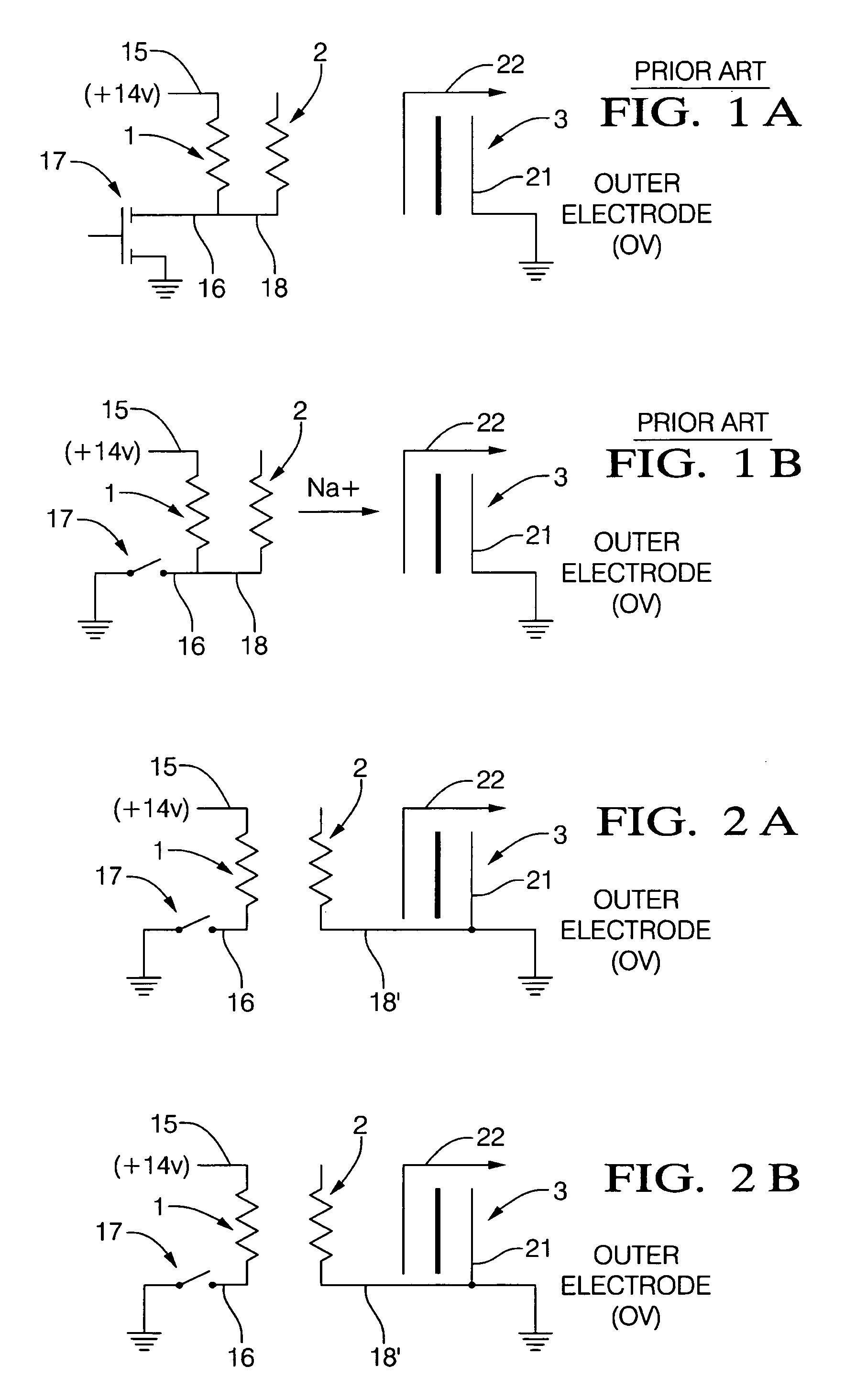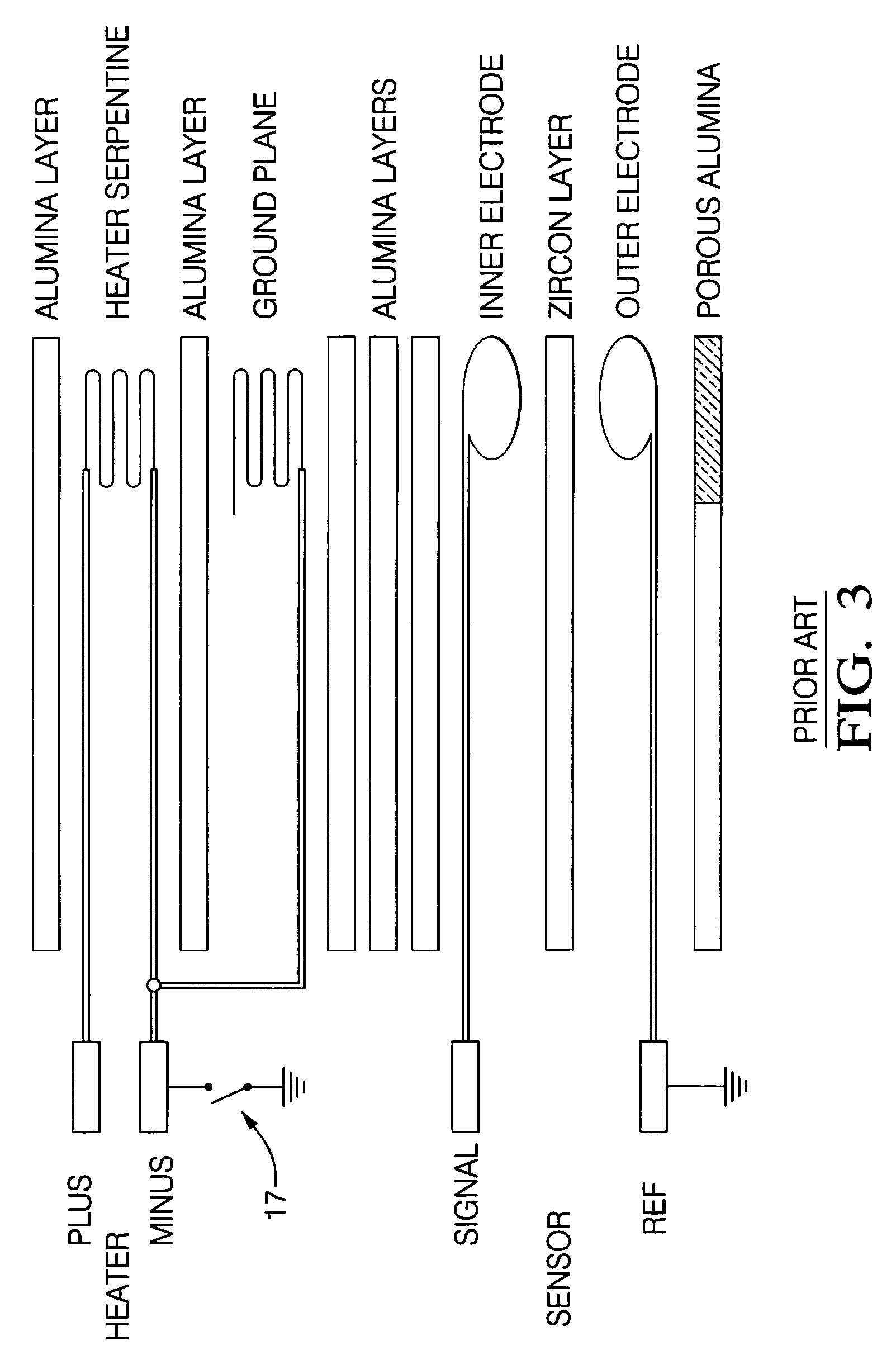Sensor isolation plane for planer elements
a technology of planer elements and isolation planes, applied in the field of sensor isolation planes for planer elements, can solve the problems of only operative ion collection functions, shorten heater lifetime, and miss the opportunity to capture ions, so as to improve the operation of ionic collection and prevent ionic buildup , the effect of high electrical potential differen
- Summary
- Abstract
- Description
- Claims
- Application Information
AI Technical Summary
Benefits of technology
Problems solved by technology
Method used
Image
Examples
Embodiment Construction
[0010]FIGS. 1a and 1b illustrate a prior art arrangement that has an electrical connection between the heater element 1 and the ion collector 2. As shown in FIG. 1a, when the heater is ON, the positive lead 15 of heater element 1 is connected to the positive supply, typically 14 volts, and the negative lead 16 is connected to the negative supply by heater control circuit 17. When the heater is ON, as shown in FIG. 1a, there is a strong electrical field in the vicinity of the positive connection while there is a weaker electrical field nearer to the negative terminal. The voltage drop along the length of the resistive heater causes the difference in field strength. Near the negative terminal, the field may be negligible because both the ion collector and the conductive lead are at approximately the same potential. Typically, because of the diode drop associated with the switching control circuit 17, the negative heater terminal stays slightly above system ground, perhaps by 0.7 volts...
PUM
 Login to View More
Login to View More Abstract
Description
Claims
Application Information
 Login to View More
Login to View More - R&D
- Intellectual Property
- Life Sciences
- Materials
- Tech Scout
- Unparalleled Data Quality
- Higher Quality Content
- 60% Fewer Hallucinations
Browse by: Latest US Patents, China's latest patents, Technical Efficacy Thesaurus, Application Domain, Technology Topic, Popular Technical Reports.
© 2025 PatSnap. All rights reserved.Legal|Privacy policy|Modern Slavery Act Transparency Statement|Sitemap|About US| Contact US: help@patsnap.com



